Sunday Classic / How’s your double haul?
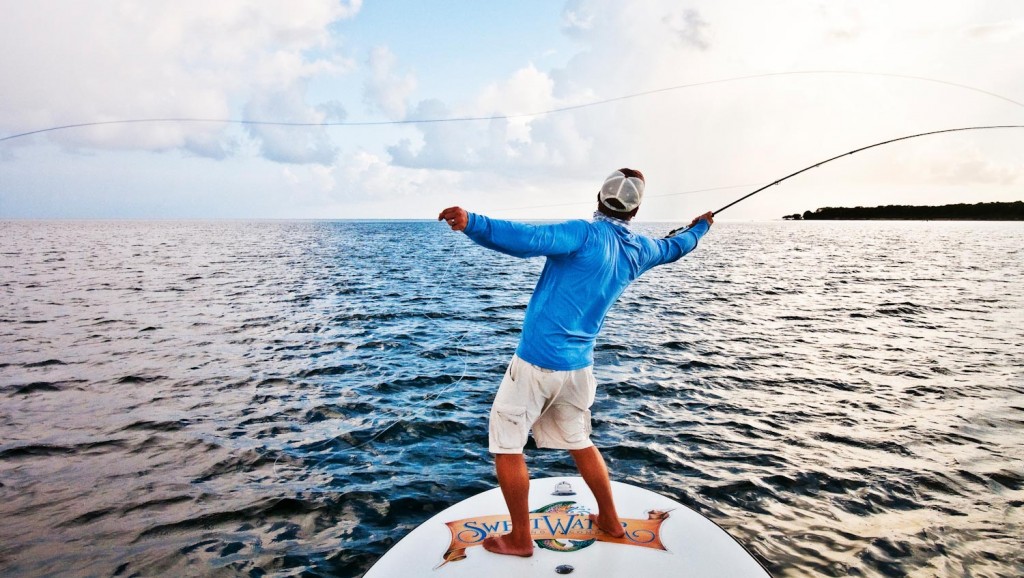
Whether in saltwater or fresh, most experienced casters employ the double haul.
It’s possibly the best technique for creating line speed and generally energizing your line during the cast. It’s also a great way to create casting problems when done incorrectly.
One of the fundamentals of the double haul that commonly causes problems is the ratio of the haul to the line being carried by the caster. On a short cast where you may only carry thirty or forty feet of line, the length of your haul, that is the amount of line you pull through the guides with your line hand, may only be a couple of feet. On a cast of seventy or eighty feet be prepared to spread your wings.
Tall casters with long arm spans hold a decided advantage here. When it comes to casting the whole line it’s good to be well over six feet but the truth is that most of us don’t take advantage of the reach we have. If a picture is truly worth a thousand words, this photo should make my point.
My friend Joel Dickey has a powerful and athletic double haul. Better than mine, even though I’m 6’4″ to his 5’9″ but he really maximizes his reach and he gets a lot of power from it. Next time you’re casting a long line
Read More »Saturday Shoutout / Fishing With Ghosts
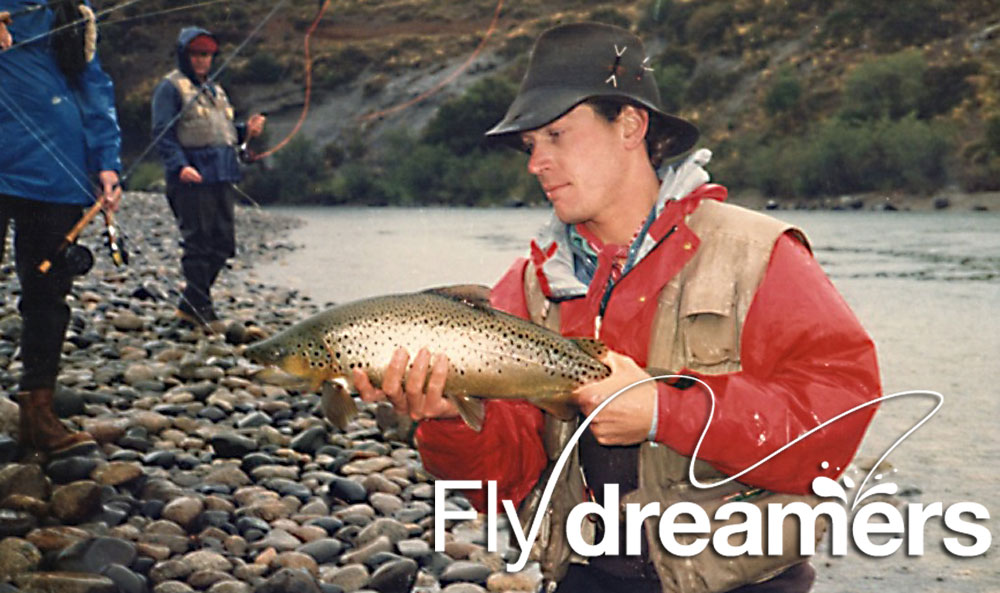
A BITTER SWEET STORY OF THE OLD DAYS IN PATAGONIA FROM BOB WHITE.
It almost seems wrong for one man to be so talented. Not only is Bob White an amazing painter, he’s quite a writer as well. This story of his early days in Patagonia, shared on Fly Dreamers, is sure to have your mouth watering. Vivid images of cold mornings, majestic views and fish and friends lost. It’s a real treat.
CHECK OUT FISHING WITH GHOSTS
Read More »Cool + Dry = Under Armour

I see more and more anglers wearing Under Armour.
With good reason. Under Armour’s fishing products division has been killing it with tech clothing that looks good and works. For 2016 UA is focusing on keeping you cool and dry with two new product lines. Cool Switch, a printed technology that works like magic to keep you cool and Storm Technology, which sadly has nothing to do with Halle Berry, but does offer you three levels of waterproof protection.
CHECK OUT THIS VIDEO FOR THE DETAILS.
Read More »AFFTA – Making Fly Shops Great

By Rob Parkins
WHAT DO GREAT FLY SHOPS HAVE IN COMMON WITH JOHN F. KENNEDY AND MARTIN LUTHER KING? I’M SURE YOU CAN COME UP WITH A FEW INAPPROPRIATE COMMENTS, BUT THE ANSWER IS “VISION”.
Last week, Bozeman, Montana, saw 100 owners, managers and employees from 40-plus of the best fly shops in the country come together for the American Fly Fishing Trade Associations (AFFTA) second annual Dealer Summit. Wednesday’s speaker, Dan Mann, of the Mann Group, explained how successful businesses must have a compelling vision in order to differentiate themselves from the many other companies in the same industry.
As a specialty fly shop employee, we have a unique opportunity to create an experience for the angler—from beginner to veteran—that is unmatched in the outdoor industry. We are able to share our love for the sport, appreciation of the beautiful places we fish and our commitment to protecting the environment. At a time of political turmoil in Washington, where politicians from both sides of the aisle cannot even agree to renew the Land and Water Conservation Fund, it is more important than ever to introduce more people to the fly fishing experience.
After the three-day series of speakers and roundtables were over, there was an overwhelming response from the dealers that they can go back to their shop and implement ideas into their business that will benefit the customer. With support from the Dealer Summit sponsors (SAGE, Simms, Yellow Dog Fly Fishing, Scott, Hatch, Hardy, Patagonia, Orvis, Costa, RO Drift Boats, Umpqua, Angling Trade magazine, Trout Unlimited the Ocean Conservancy and the city of Bozeman) your local fly shop will be more prepared to share the story of fly fishing with its customers.
One of the highlights of the event was
Read More »8 Elements of Fly Design to Follow for Imitating Trout Food Sources
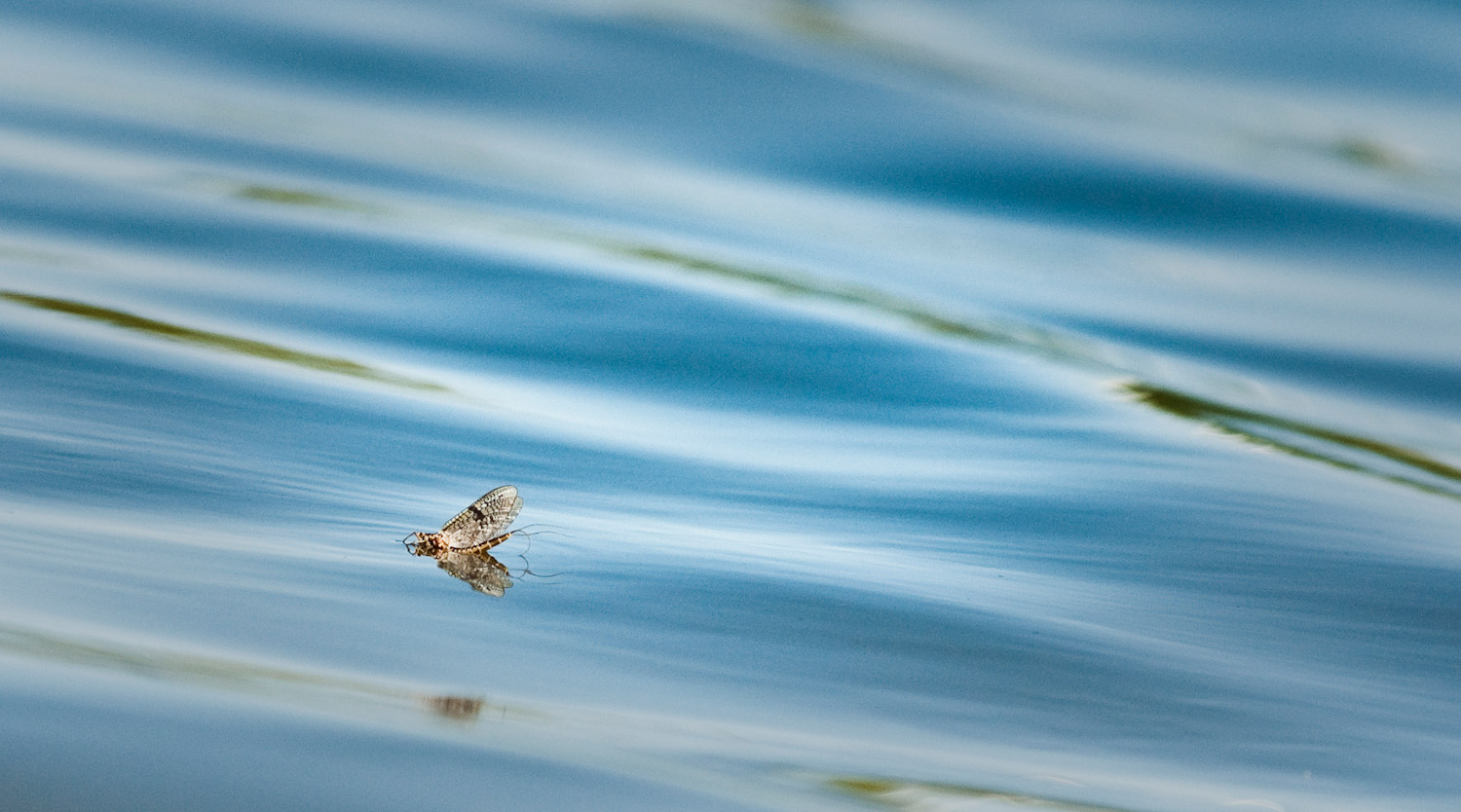
When tying fly patterns, it’s very important that you try your best to incorporate several different elements of fly design to increase their effectiveness. No one knows with complete certainty what order or priority trout rank each element of a food source or fly pattern, but most anglers agree that the value or ranking of the elements often change depending on how long a trout has been selectively feeding on a specific food source, at what frequency the specific food source is being eaten, and how diverse or consistent a trout’s diet is at the present moment. The order of the elements that I will talk about in know way ranks the importance of the elements. Instead, fly tiers should look at them together as a whole, and try to include as many as possible or as a check list of the features a fly pattern should have when completed. Doing so, they should find there fly patterns more effective on the water for fooling and catching trout. In this post, I will specifically talk about eight different elements of fly design that fly tiers should pay close attention to when tying fly patterns at the vise.
Read More »Understanding Fly Line Tapers and Diagrams

Buying a fly line doesn’t have to be a leap of faith.
For many anglers, fly lines and their characteristics are a huge mystery. They know that different fly lines cast differently and that some suit their needs or casting styles better than others but they have no idea why. What’s worse, when it’s time to buy a new line they aren’t able to make an informed choice. They just go to the fly shop and ask for the best line. Thank God for knowledgable fly shop guys, but do you really want to rely on someone else’s guess at what you will like?
If this sounds like you, I have good news. There is an easy way to get a sense of how a fly line will cast before you ever take it out of the package, and with a little experience you can quickly choose the line that’s right for the way you fish.
Fly lines have become really complicated in the last five years or so. Specialty lines have multiplied like rabbits and line companies have created lines to match every species, water condition and casting style. If you’re confused, you’re not alone. Fortunately, almost every manufacturer publishes line diagrams which show you, in detail, the taper of each line. If you know how to read the diagram, you’ll know how the line will cast.
BASICS
There are three basic types of line tapers. Weight forward, double taper and triangle taper. Looking at the diagram, it’s pretty clear how they get their names. The double taper line is a very traditional style of line which has a long level belly and a symmetrical taper on each end. Weight forward lines shift the weight to the front of the line and were developed to match modern fast action carbon fiber rods. Triangle tapers are a kind of hybrid of the two.
Think of the diagram as a picture of the fly line in profile with the thickness of the line exaggerated. The thickness of the line indicates two things. Where the weight is and the relative stiffness of the line. Where the line is thicker, it will be heavier. Different line materials have different stiffness, but within a given fly line, the line will be stiffer where it is thicker. Knowing where the weight is in the line will tell you how it loads the rod and the stiffness, as well as the weight, will tell you how it presents the fly.
ANATOMY OF A FLY LINE
To understand the information the diagram gives you, first you have to understand the different parts of the fly line and how they affect the line’s performance. Most modern fly lines have five parts. From front to back they are the tip, front taper, belly, rear taper and running line. Each one performs a specific function and its weight and length determine how the line casts.
THE TIP
The tip is the final word in fly presentation. The longer and lighter the tip, the more delicate the presentation. A long light tip will work to your advantage when
Read More »Sunday Classic / Don’t Gink it, Sink It
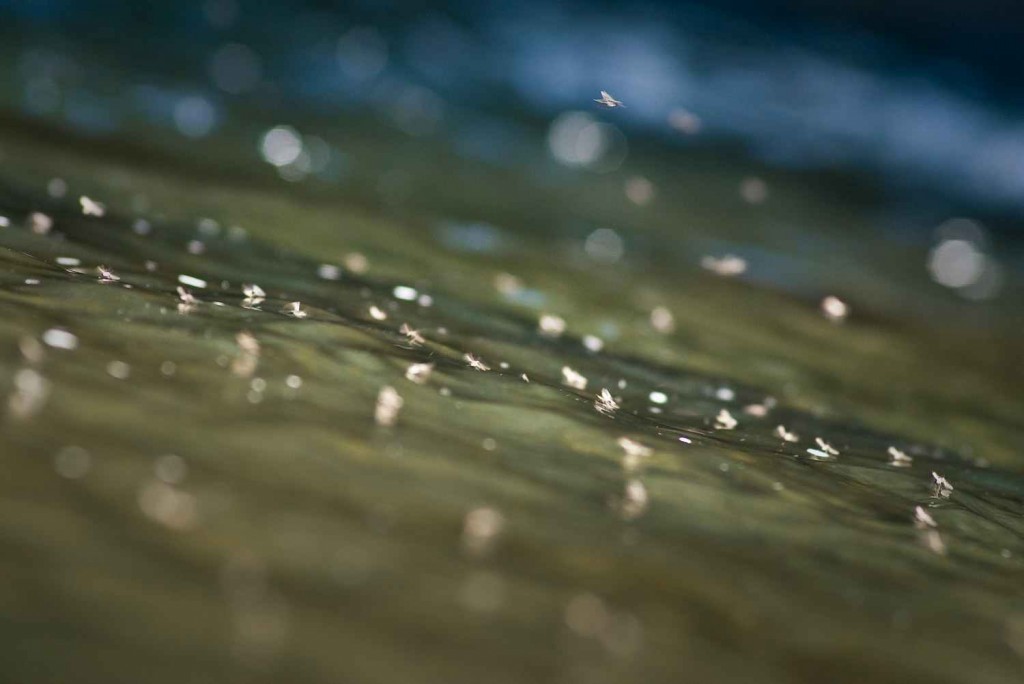
Ever been on a trout stream during a blanket hatch and no matter how many times you drift your floating imitation over the rising fish, it’s ignored? I’ve experienced this frustrating situation many times on the water. When this happened in the past, I used to think I was using the wrong pattern, or I was getting micro-drag during my drift or maybe my tippet was too large. Although one or more of these can often be the culprit of failing to get bites during a heavy hatch, it’s actually more common that you’re problem lies in the fact that you’re choosing to fish your fly on the surface instead of below the surface.
When hundreds or even thousands of bugs are on the water it makes your fly pattern very difficult to distinguish itself apart from all the other naturals on the water. Take for instance a trico spinner fall in late August or September. When in full swing, it can seem like almost every square inch of the water is covered with these tiny guys at times. Although many of them float long distances on the surface, eventually they will sink. Not all at once of course, just a portion of them here and there. When you choose to sink your fly pattern instead of floating it, you’re going to increase your chances of catching those feeding fish for three reasons.
1. You decrease the amount of competition between your fly and all the naturals.
By sinking your fly pattern below all the naturals on the surface your giving you’re pattern
Saturday Shoutout / Dharma Works
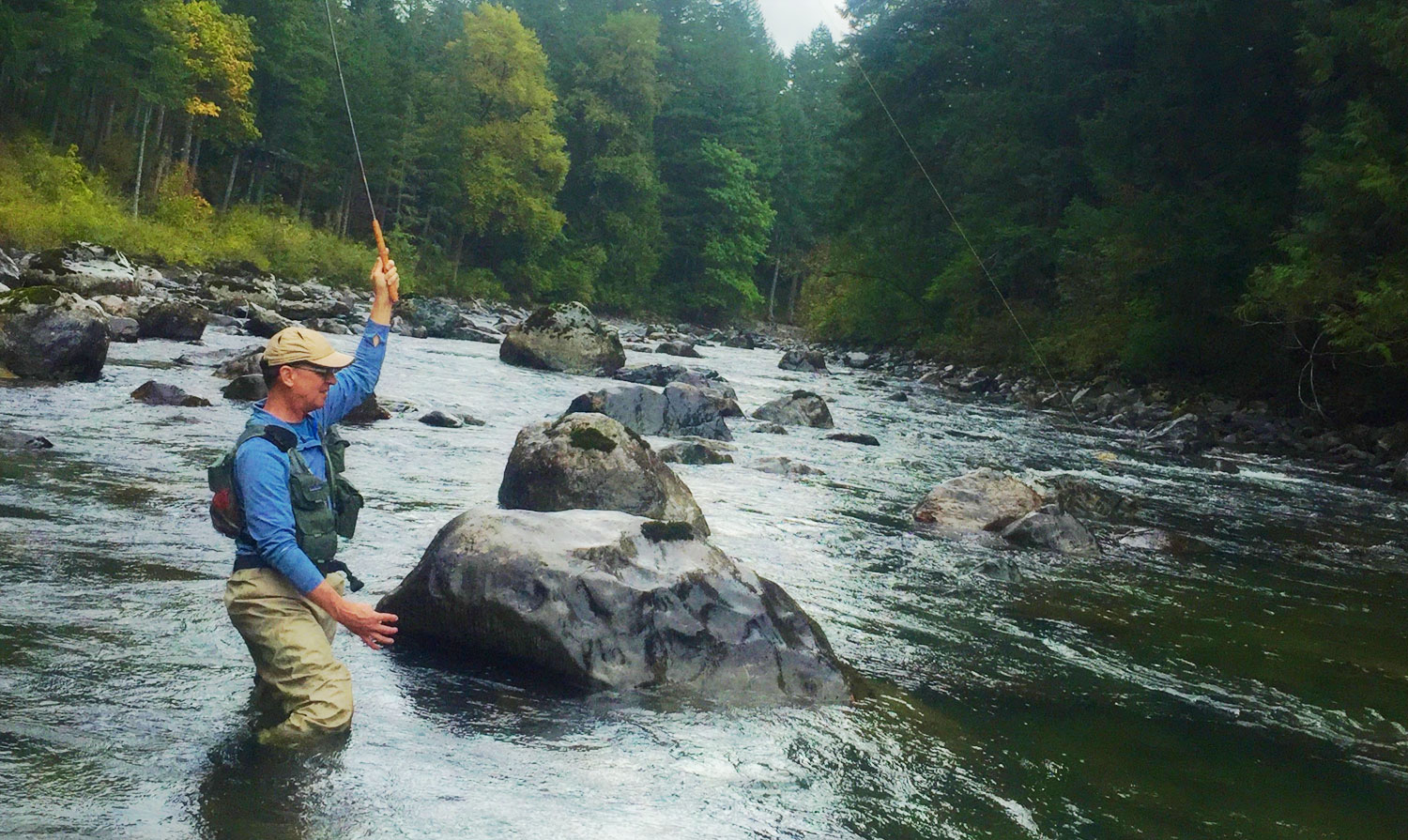
Steelheading is never a sure thing. You want to catch fish and when you haven’t been able to take a fishing trip in a couple of years, due to life threatening illness, the pressure is really on. That’s exactly the spot my buddy Tim found himself in. You may recognize Tim Harris as a regular G&G contributor. You probably don’t know that he has battled SIBO for the last several years. An avid angler in saltwater and fresh Tim is particularly fond of steelhead. His illness has separated him from the fish he loves for far too long. With some trepidation he decided to join me on this years steelhead camp trip to the Deschutes River in Oregon. He wrote a great story about it on his own blog, Dharma Works. Check out DESCHUTES STEELHEAD AND YAKIMA TROUT Louis Cahill Gink & Gasoline www.ginkandgasoline.com hookups@ginkandgasoline.com Sign Up For Our Weekly Newsletter!
Read More »New Airflo Fly Lines For 2015

Airflo is always innovating fly lines.
There are a bunch of new lines from Airflo this year. A little something for everyone. New Super Dri skagit heads and running lines for steelheaders. Two new single hand lines specificly for Atlantic salmon. A new competition euro-nymphing line and a stealth taper trout line that’s actually camo printed.
I took a few minutes with Tim Rajeff at IFTD 2015 to talk about the new offerings from Airflo. Watch the video for all the details.
Read More »Fly Fishing the Trico Hatch & Spinner Fall
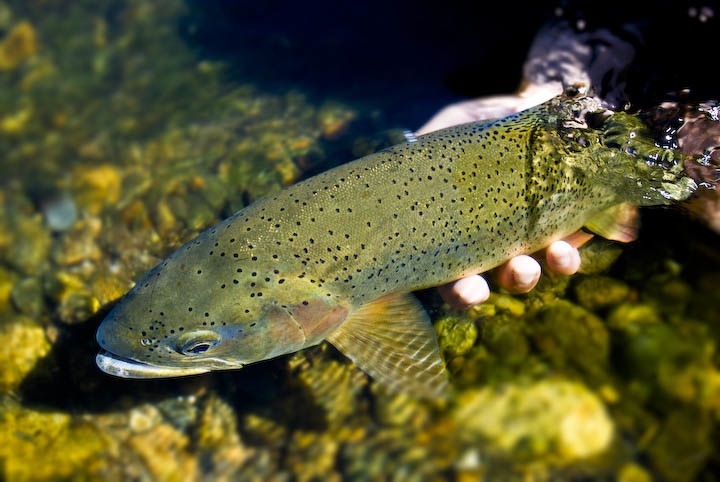
The first major spinner fall that I ever witnessed and had the pleasure of fishing took place many years ago on the South Platte River in Colorado. I’ll never forget the excitement I felt as I watched countless trico spinners floating downstream in the surface film. Never in my life had I seen so many bugs on the water. With one scoop across the surface of the water with my hand, I held dozens of tricos. I was so amazed by the density of bugs on the water that it put me in a frozen trance. Unable to wet a line, I remember thinking to myself, “This must be what fly fishing in heaven is like.” Growing up in the Southeast, I’d never seen a spinner fall of such magnitude. I’d only read about them in books. Looking back on that day now, I believe my reluctance to start fishing that morning had a lot to do with me just taking it all in, and appreciating the true beauty of nature at work. Only after I took the time to pay my respect to the bugs and wild trout, did I feel worthy enough to begin fly fishing such a beautiful place.
Read More »